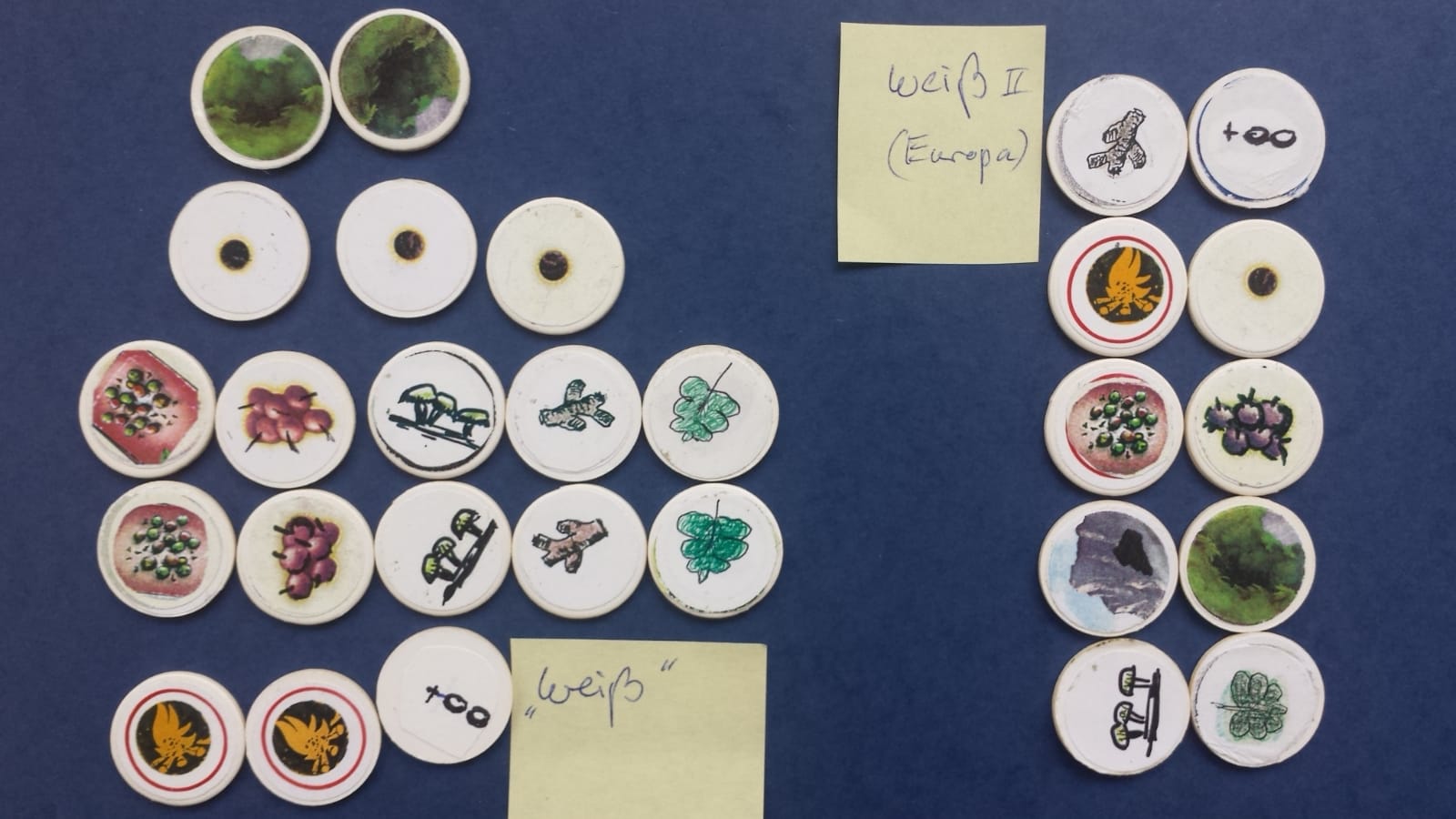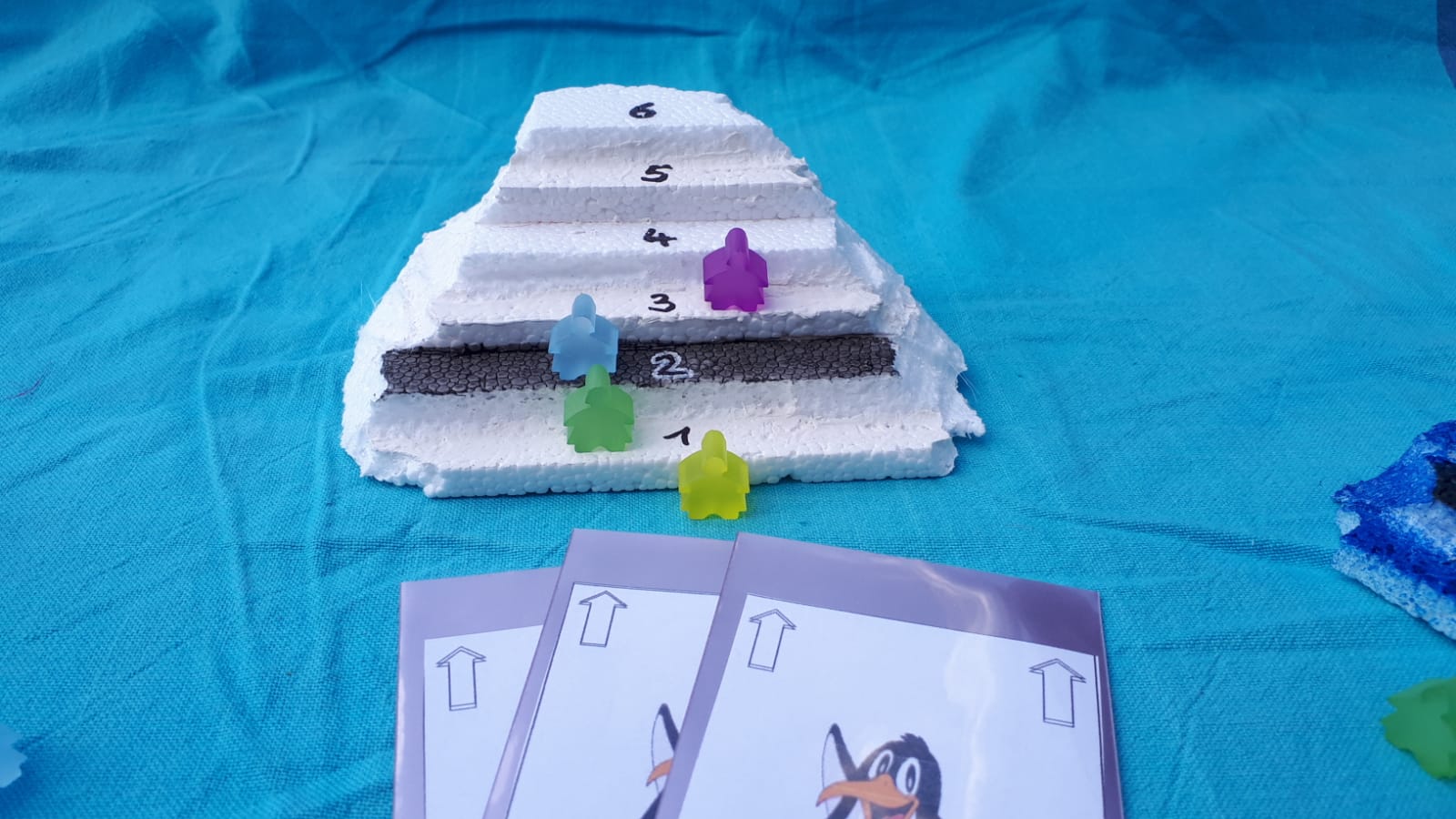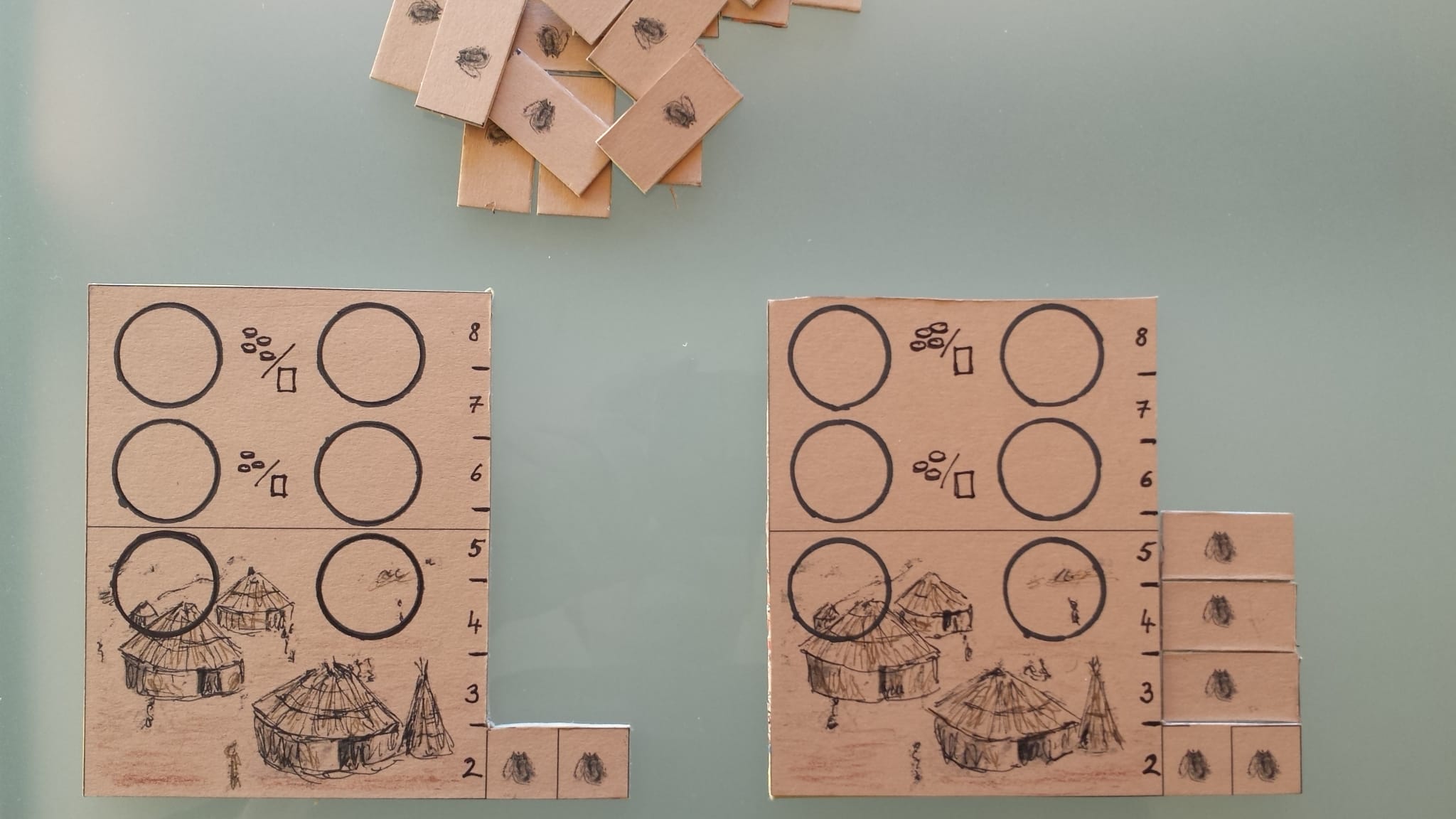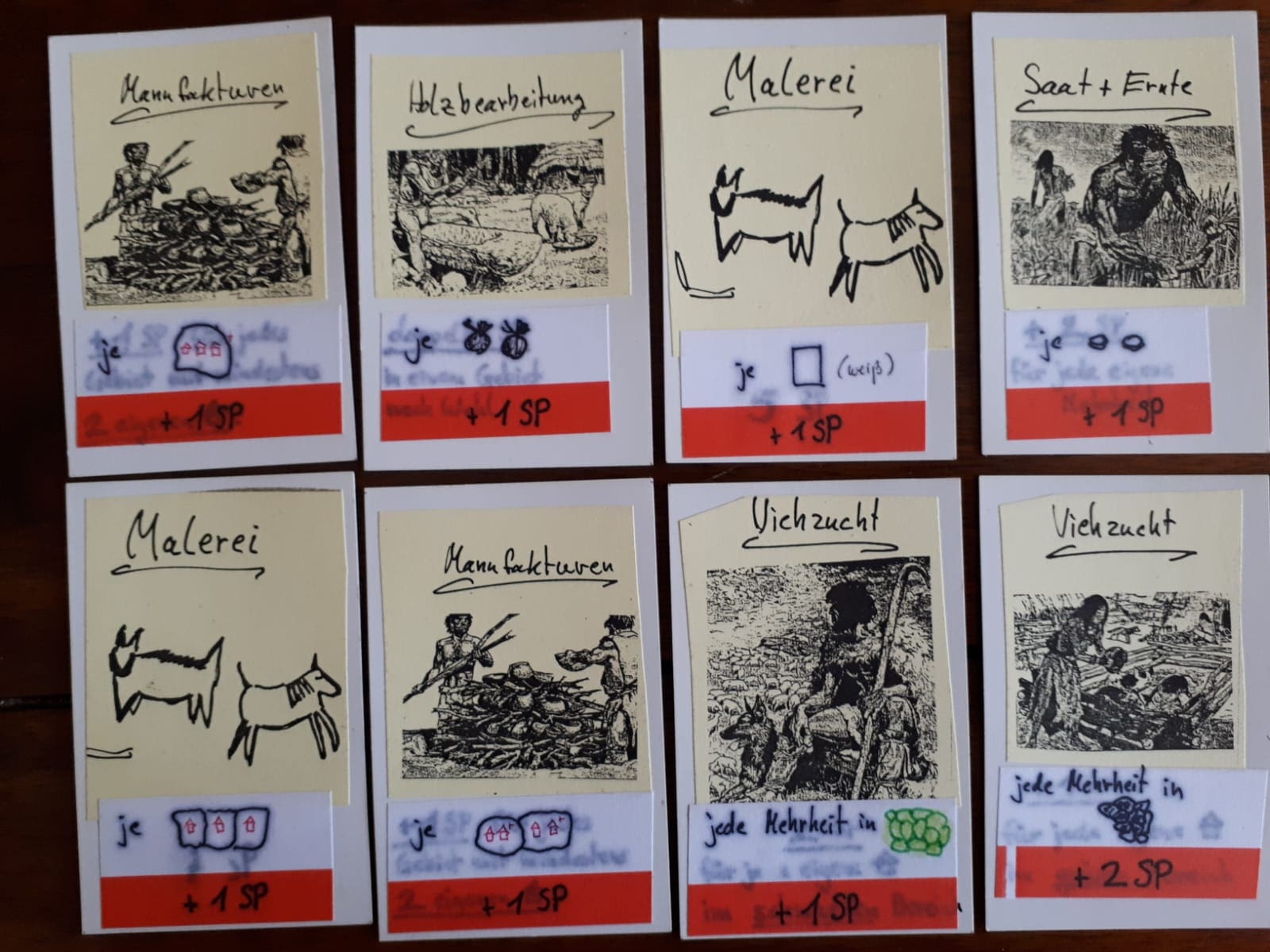Two family games created by Klaus-Jürgen Wrede, designer of the 2001 Game of the Year (Spiel des Jahres 2001) (Carcassonne), will be published by Pegasus Spiele in spring of 2022: Fire & Stone is already available, Raccoon Robbers is expected to become available in March. While in Fire & Stone you lead your tribe through the Stone Age and out of Africa into the wide world by starting fires, building huts, hunting animals and gathering mushrooms or fruit, your goal in Raccoon Robbers is to be the first to reach the golden trashcan with your raccoon boss. Having to complete reckless jumps and push rival raccoons out of the way seems like a small price to pay to reach such a promising prize, right?
Just in time for the publication of his new games, we talked to Klaus-Jürgen and asked him questions about these recent titles and his work as a game designer in general. Here we go:
Klaus-Jürgen, how do you get ideas for new games? Where did the inspiration for your two recent games, Raccoon Robbers and Fire & Stone, come from?
"90% of my ideas are developed starting from the theme. I only start with the mechanism with simple dice or card games. But for board games and family games especially, I think the theme is important. Nonetheless, the mechanism has to provide an attraction and create excitement too, of course. But it’s not what’s most important. The mechanism unfolds almost by itself when one looks ‘behind reality ’ … humankind explores the world – players do the same on a small-scale on the board, etc. Personally, I often dislike games that feel ‘mechanical’ and in which the topic feels artificial. I prefer following a story or identifying with a tribe or certain animals and diving into the world the game offers."

In your first game, Carcassonne, as well as one of your most recent games, Fire & Stone, turning over tiles plays an important role. Do those games have further similarities or can we look forward to a completely fresh game principle?
"I like when there is something to discover in games, when you can slowly assemble or spread from a small spot. Both games surely have that in common, there is tension when a new tile is turned over. You are always hoping for a certain one, but you also need to adjust to what’s coming. It’s just like life… ;) Nevertheless, both games are completely different and have a different feel to them. In Fire & Stone, you slowly build up your tribe’s abilities and keep adapting to the environment."
In Fire & Stone, players lead their tribe of early humans through the Stone Age. In Raccoon Robbers, raccoons are looking for food. Those are very different worlds. How did you come up with these themes, specifically?
"In Fire & Stone, I actually wanted to retrace the steps of humankind. Starting in Africa – the cradle of humankind – I wanted to let humanity explore the world: look for food, build settlements along the way, discover woods, caves and animals and finally develop. Starting out with only average preconditions but equipped with the ability to learn, humans have developed amazing skills – conquering fire, discovering the wheel, developing agriculture and pottery and so much more. All of this, I wanted to reenact as simplified as possible, without players having to sit down for two to three hours at the playing table.

With Raccoon Robbers, the theme was also in the foreground, even though the topic changed on the way to publication. Originally, the game was called Ice Diver and penguins were climbing icebergs and sliding down again from as high a position as possible. Of course, this led to quarreling and shoving from time to time… ;) Because Pegasus liked the game but had already published a penguin-themed game, we thought about where a similar situation could come up. I liked the idea with the raccoons climbing up the houses of New York looking for food a lot."
What do you enjoy most about your work?
"The creative aspect. I am a very creative person, in every shape and form – be it music and composing or writing or, my favorite, designing games. Here, many things come together in an almost ideal way: the creativity, the logic and the construction of a dramaturgy, the social aspect of a game, the artwork."
Did the pandemic change your work?
"Very much so! Even though, you have more time and calm to yourself and are not on the road as much (because fairs and events are canceled), a big part is missing – playtesting. The continuous testing helps, of course, and provides new ideas and impulses. And that’s simply missing."
Many of your games are addressed to families. Does your family play board games often and how did you get into playing board games?
"I like different games, as well – complex ones and party games and basically any kind of game. As long as it’s good – and there are many good games. As a child, I quite liked to play but at the time there weren’t as many great games around as there are today. Monopoly and Mensch ärgere dich nicht – but that was never really my favorite. Only once I was in my early twenties, did I notice that by then there were more interesting games. And I started trying them out. And when I visited the SPIEL in Essen for the first time, I was definitively infected and had completely fallen for board games. From then onwards, they have never let go of me."
What makes a good board game, in your opinion, and do you have a favorite game that you keep taking out of your cabinet to play?
"A good board game lets you dive in and continuously challenges you. This can be done in a variety of ways: It can challenge your brain or simply be enjoyable, let you get to know the other players better or keep pushing you to make decisions, let you solve riddles or require fast reactions … Something I really enjoy and value in games is, when the game lets you dive in so deep that you basically forget what is happening around you. And when it makes me want to do everything at once – but obviously that’s never possible ;)
Of course, there are many, many games I like and enjoy playing over and over again. Most of the time, I am also curious to get to know recently published games and because there are so many new ones each year, the older ones are sometimes forgotten about. But the games I like to play are very varied: Codenames, Maracaibo, Praga, Linq, Brass, Hacienda, Sankt Petersburg, Era of Tribes, London, Times up, Terraforming Mars, Rokoko, just to name a few…"
In Raccoon Robbers, there is a lot of interaction as players, aka raccoons, shove each other off the windowsills. Was it important to you to include interactions between players?
"Of course! That’s essential to the game – it’s what makes it come alive!! One always tries to push the others down to take a better or higher position. That leads to quite a bit of quarreling and back and forth on the windowsills."
Who should take a closer look at Raccoon Robbers?
"People who enjoy games with simple rules but a bit of competition and interaction. Mainly, it’s a fun game and is supposed to offer players a good time!! Emotions are welcome! ;)"

Let’s go back to the Stone Age: What is special about Fire & Stone, in your opinion?
"The game follows the path of humanity spreading all over earth. You start in a small place in Africa, without skills, but the more you discover, the stronger you become and the more abilities you obtain. The things you discover and explore along the way influence every decision moving forward. The game has a variety of elements but all of them are intuitive and accessible through the theme and settled in the conflict between strategy and luck. That’s why there is continuous suspense in the game. With Fire & Stone, I wanted to create a game that is directed at families and casual players at the same time, but also offers experienced players many interesting options and variety."
There are a few factors that influence the game play in Fire & Stone, for example the cave cards and the random setup placement of tiles. Hence, every game is different. Can you tell us more about these chance elements?
"As the concealed tiles are spread over three main regions, they are prestructured in a way. It’s not completely up to coincidence what players find. They can always choose to stay in Europe because there is still something interesting to discover there – or they can advance to Eurasia to have a chance at being the first to reach the coveted settlement areas. This way, players have to make small choices each turn. Nevertheless, the suspense of what is actually going to be found in a newly entered area stays high. Do I stay where I know for sure there is a food supply? Or do I build a hut before others do it and it becomes more expensive?
The caves are a kind of expansion that’s integrated into the game. The cave can have very different functions. This is decided by the scenario card that is selected in the beginning – or even drawn at random. There are 24 of them. This way, goals and the focus of the game can change and the game never becomes boring."

One last question: What advice would you give to new game designers?
"Follow your vision of the game! Don’t listen to what is in or out at the time. Just keep creating a good game – until you are happy with it! Let yourself be questioned again and again and take any criticism seriously! But still remain true to yourself!"
Klaus-Jürgen, thank you for taking the time to give us some insight into your work and your recent games!
Questions, comments, feedback? Share your thoughts with us at blog@pegasus.de.




